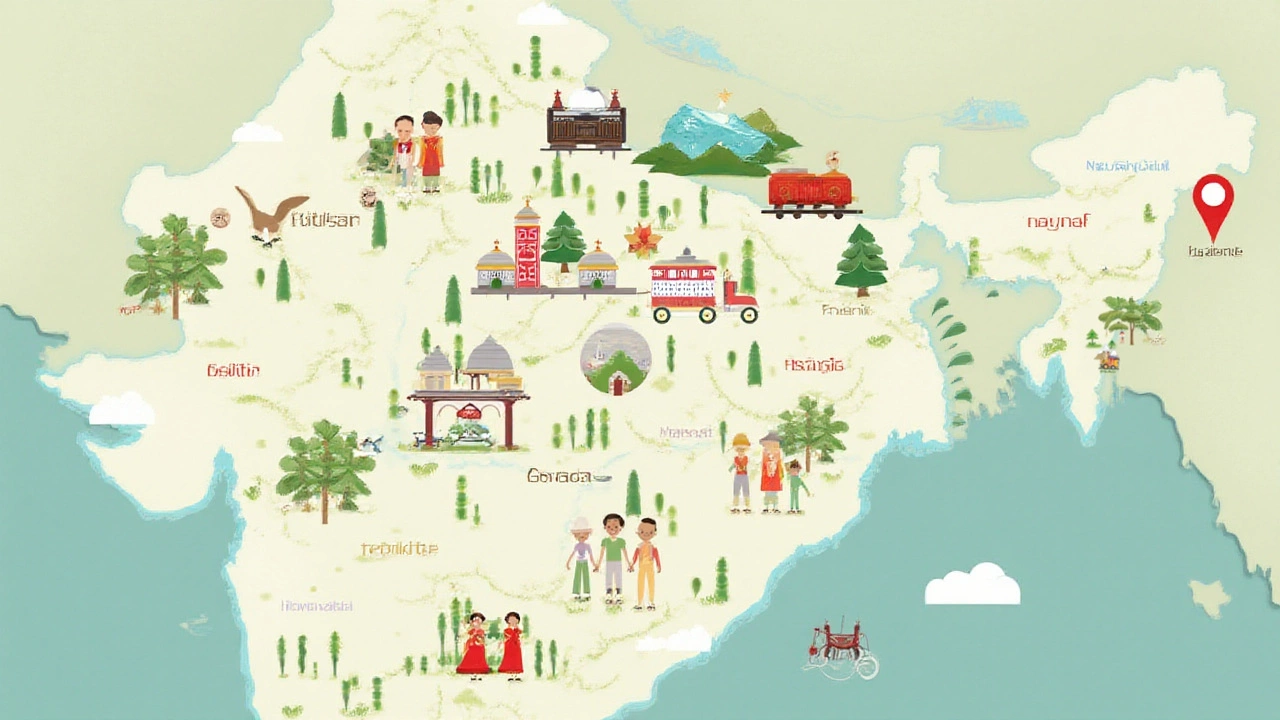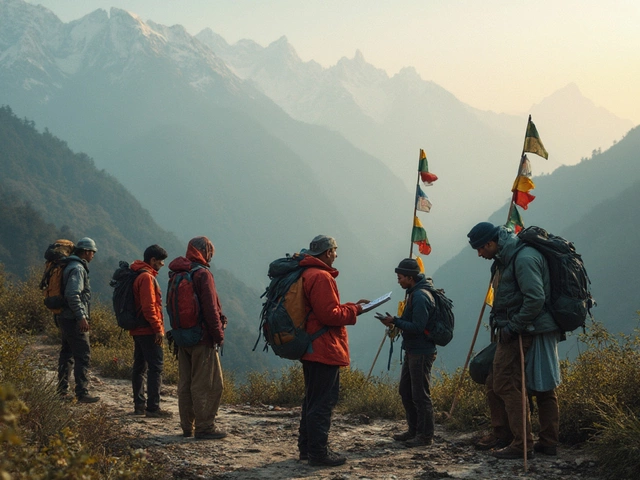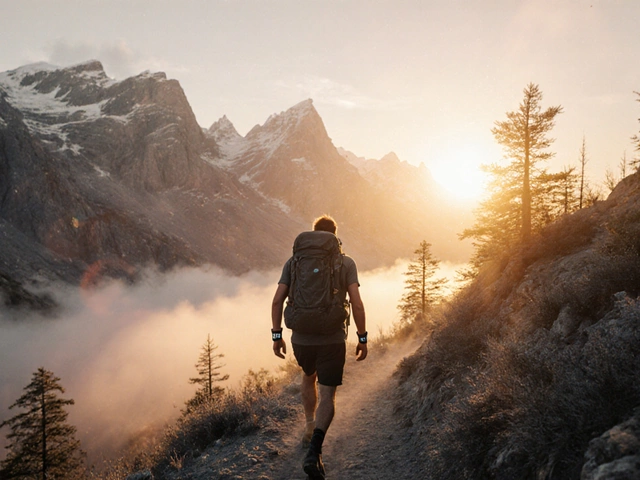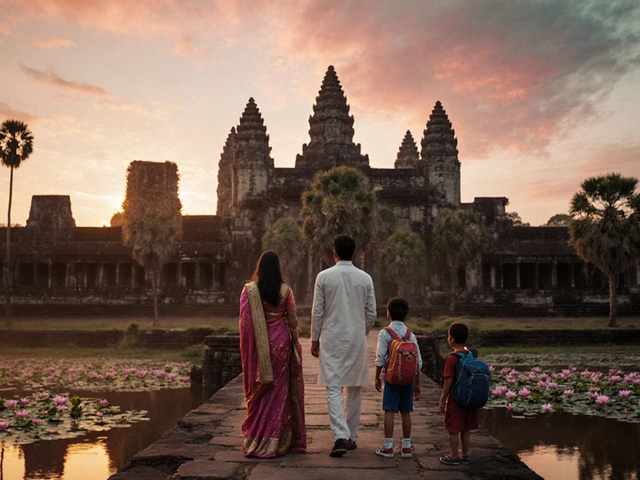Think of cool air, misty mornings, and rolling green hills—hill stations are basically India’s way of escaping the summer blaze. But here’s a fun twist: not all Indian states are stacked with these chill getaways. Some have just a couple, while others seem to have one at every bend. Wondering which one tops the charts? That’ll be Himachal Pradesh, and the reason isn’t just geography—it’s almost like the state was genetically engineered for the hill station experience. But there’s way more to the story than just numbers. Some states have famous names; others hide their best secrets deep in the valleys. So, let’s unravel the details and dig deep into what makes a state the “hill station king” of India.
Why Some States Have So Many Hill Stations
First off, let’s get one thing straight: hill stations didn’t spread across India by accident. Their locations make total sense if you peek at a map and track the mountain ranges. The northern part of India, especially states like Himachal Pradesh and Uttarakhand, sits right in the lap of the Himalayas. These hills, shaped over millions of years, naturally set the scene for mountain towns and summer retreats. British colonials once scouted out the coolest, least sweaty spots, and with their love for Victorian comfort, hid away from the plains in places like Shimla and Mussoorie. Their legacy? A dotted trail of towns that are as famous for their architecture and history as their scenery.
So, why does Himachal Pradesh stand out? Simple: it's blessed with endless valleys and ridges. More valleys mean more hidden gems. There’s a historical edge too—royal families and the British weren’t content with just one or two hideaways. They wanted options. If one hill station got crowded or too much like home, they just set up another. This pattern continues to today; trekkers, writers, and even regular holiday-makers carve their new favorites in lesser-known corners. Another reason Himachal wins is variety: snowy getaways like Kufri, cultural gems like Dharamshala, orchard havens like Kasauli; it’s not just the number—they’re all wildly different from each other.
Compare this to, say, the Western Ghats states. They’ve got their own hill stations (Munnar in Kerala, Ooty in Tamil Nadu), but those ranges aren’t as extensive or high-flying as the Himalayas. So, while Southern India hill stations might be crazily picturesque, the density and diversity just can’t match the Northern giants, especially Himachal. And if you’re looking for numbers, Himachal Pradesh officially boasts over 25 named hill stations—and a few dozen unofficial dots people call theirs for the weekend. You’ll see the same trend up in Uttarakhand, but Himachal edges slightly ahead by count and fame.
The Heavyweights: Himachal Pradesh Takes the Crown
If you’ve ever planned a hill station trip, a few names keep popping up: Shimla, Manali, Dalhousie, Kullu. Notice a pattern? All of them call Himachal Pradesh home. It’s the state where “too many hill stations” is never a complaint. The numbers actually tell the story best, so check out this quick summary:
| State | Number of Major Hill Stations | Popular Examples |
|---|---|---|
| Himachal Pradesh | 25+ | Shimla, Manali, Dharamshala, Kasauli |
| Uttarakhand | 20+ | Mussoorie, Nainital, Almora, Ranikhet |
| Tamil Nadu | 10+ | Ooty, Kodaikanal, Coonoor, Yercaud |
| Maharashtra | 8+ | Mahabaleshwar, Lonavala, Panchgani, Matheran |
| Kerala | 6+ | Munnar, Thekkady, Wayanad |
What keeps Himachal ticking? For one, accessibility. Unlike those far-flung Northeast gems or the isolated stations in the Nilgiris of Tamil Nadu, Himachal’s hills play nice with roads and railways. You can drive, train, or even grab a bus to most of them. Modern infrastructure has shrunk travel times. Back in the '90s, getting to Spiti by bus was like a week-long bootcamp; now, you can do it over an action-packed weekend.
Himachal doesn’t just lean on numbers—it also offers depth. You want snow? Kufri’s got you. Artists? McLeod Ganj pulses with creative energy. Adventure junkies? Paragliders and trekkers flood Bir-Billing and Kasol. Beyond the obvious, tiny villages like Tirthan Valley or Shoja boast cozy guesthouses and killer hiking trails—but rarely hit Instagram’s trending lists. Local culture, from Himachali handicrafts to food, dives deeper every year as people branch out from the big-name spots.
A cool tip for explorers: skip the weekend crush by heading to options like Chitkul or Sangla Valley. These aren’t on every tourist’s bucket list, so you’ll find more apple orchards and less jostling for the perfect photo. And if solo travel is your thing, Himachal’s hostels and homestays have redefined backpacking scenes. You meet folks from half the planet, all bonding over steaming chai and spectacular sunrises. Whether you’re after a spa in Mashobra or a monastery in Keylong, Himachal has it all.

Southern Surprises and Unexpected Contenders
Most travelers automatically salute the Himalayas whenever hill stations come up. But the South and West aren’t about to be left in the dust. Let’s talk about Tamil Nadu. Home to lush Nilgiri hills and the legendary Ooty—the ‘Queen of Hill Stations’—this state fights above its weight. Ooty, Coonoor, Kodaikanal, and Yercaud draw flocks of tourists every year, thanks to rolling plantations, toy trains, and that unbeatable garden-party vibe.
Unlike Himachal, though, Tamil Nadu’s hill stations are usually spaced out further, each hugging mountain patches rather than entire valleys. Think compact, not clustered. And while there’s less snow (none, actually), you’ll find misty walks and more biodiversity. Even the toy train journey from Mettupalayam to Ooty is a UNESCO World Heritage ride—a claim that few in the Himalayan belt can match.
Maharashtra stuns with Sahyadri hill stations like Mahabaleshwar and Matheran, which see a tidal wave of Mumbai weekenders looking to cool off. The difference here? Most stations are much lower altitude compared to Northern giants, and the weather is less dramatic—think breezy, green monsoons rather than biting cold. People love these places for their accessibility and the old-school vibe. Can’t escape to the Himalayas? Lonavala’s chikki and mist make a sweet substitute.
Kerala, meanwhile, does hill stations with a dash of its own flavor. Munnar’s rolling tea fields and Wayanad’s forest trails serve up tranquil backdrops. While the count doesn’t match Himachal, every place here brings something totally different: wild elephants at Periyar and tranquil lake views in Vagamon. The Western Ghats are more about tropical greenery and spice gardens than icy peaks and snowball fights, but that’s part of their magnetism.
Hidden across the country are even more surprises—Meghalaya in the Northeast houses hill stations like Shillong, often dubbed the ‘Scotland of the East.’ These places rarely make national top-fives, but for the traveler willing to go off script, they’re pure magic. Next time you want something fresh, try escaping the crowds in Mizoram or Sikkim. The only catch? Some of these spots need extra planning; infrastructure isn’t as smooth as Himachal or Uttarakhand, but the reward is full-on adventure minus the crowds.
Hill Station Travel Hacks and Fun Facts
Let’s admit it: knowing which state has the most hill stations is cool trivia, but getting the most out of your trip takes a little extra savvy. Here are some tricks that can turn a “nice break” into “best trip ever.”
- India hill stations in Himachal get jammed up on long weekends and school holidays—try weekday getaways or shoulder seasons (late March, late September) for quieter times and better deals.
- Local buses and shared taxis are budget-friendly, but if you love pitstops and hidden turns, rent a scooter in smaller towns—just prep for winding roads and spontaneous mountain goats.
- The lesser-known stations often have much warmer homestays and fresher food than big hotels. Chat with locals; they know the earthquake-proof houses and the best chai stalls.
- Winter trips? Double-check road status. Himachal and Uttarakhand’s high passes (like Rohtang or Nathu La) often close after heavy snow. Locals track these way better than Google.
- Every state’s hill stations have signature foods. Momo spots in Dharamshala, jaggery-based desserts in Matheran, chocolate fudge in Ooty—don’t stick to daal chawal the whole time.
Here’s another tip: Indian Railways has set up panoramic coaches for several hill station routes. Slow, sure—but absolutely worth it for the views. And don’t discount less famous states: Arunachal Pradesh, with its almost untouched hill stations, keeps drawing YouTube travel bloggers hungry for new ground. If you’re happy to travel slow, these Northeast hills are loaded with folklore and off-the-grid treks.
And hey, if you’re worried about the environment, hill stations are getting a green makeover. Several towns (like Matheran) ban cars, while others, like Ooty, push for reforestation and local waste management drives. Staying green isn’t just trendy up in the clouds—locals are dead serious about keeping their towns beautiful for the long haul.
So, what’s the verdict? Himachal Pradesh grabs the top spot for the most hill stations, both in variety and vibe. There are hidden gems all over India, so don’t be shy about heading south or northeast for your next retreat. The hills only get better as you explore further. Next break, ditch the usual and pick a hill station you’ve never heard of. Bet there’s one waiting to blow your mind—and give you the best cup of chai you never expected.



